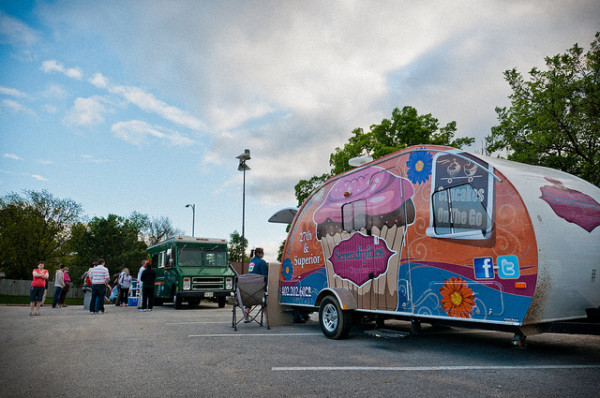Food trucks have become a recent trend in many towns–New York, Portland, and Los Angeles, to name a few. With the quickness and novelty that comes from eating delicious foods made in front of you, food trucks have become common choices during lunch and dinner hours. However, the safety of the food from these trucks has been of great concern to the health department and among consumers.
Food trucks are legally supposed to be checked twice a year. There are currently around 3,200 food trucks in Los Angeles, but 40% of those trucks have not been inspected. The remaining 60% have only been inspected once a year. This means that normal hygiene practices could remain unchecked in food trucks that are difficult to locate or have not been reached by inspectors. In fact, the Department of Public Health deemed food trucks to have a “moderate to high risk” because they cook and serve food rather than sell them in packages.
Image Source: Nakita Krucker
Secondly, it is difficult to access information about each truck. On the Department of Public Health website, there is an option to search a business under the restaurant inspection page, but not all food trucks appear on searches because they are often leased to other companies. This makes it difficult to check which food trucks are safe before eating at them and to obtain contact information if you become sick after eating at a food truck.
The inaccessibility is not only frustrating for consumers, but also for inspectors who cannot look the trucks up to inspect them. This is one of the reasons why some trucks simply do not get inspected. Moreover, even when they are inspected, only their storage sites that are inspected, not the actual operating center itself, which is where most of the safety concerns lie. Officials are currently trying to equip these vehicles with GPS systems in hopes of dissolving the issue of inaccessibility and lack of transparency.
If you are a food truck-goer, however, there are ways in which you can ensure that you are eating at a food truck that is safe, as some are safer than others. There are three things to check for: license, good grades, and gloves. Many towns require their food trucks to post their license on their windows with the date, name of the town, and a seal. You can also ask to see the license directly. In addition, a grading system for food trucks was implemented in 2011, and a food truck’s grade is required to be posted as well. It is important to be aware of what different grades mean–a grade of a “C” is close to being shut down. Finally, anyone preparing your food should be wearing gloves and changing them frequently in order to prevent contamination.
Overall, it is important to be aware of safety concerns for food trucks. Luckily, there are features you can check for when determining whether or not a food truck is safe enough to try. Happy (and safe) food trucking!
Feature Image Source: Jonathan Reyes










